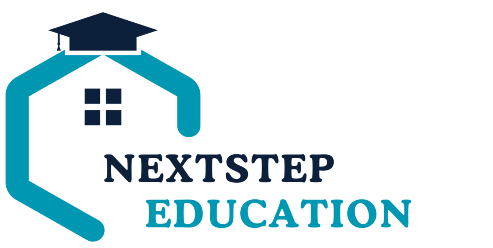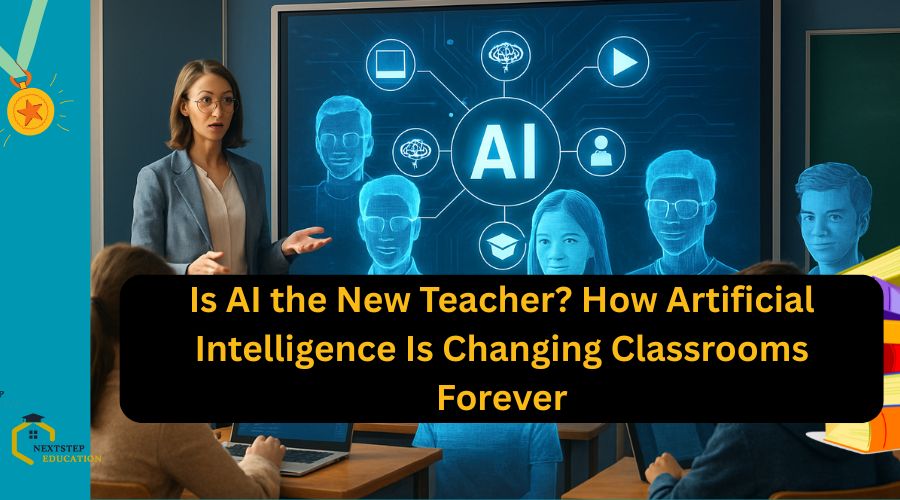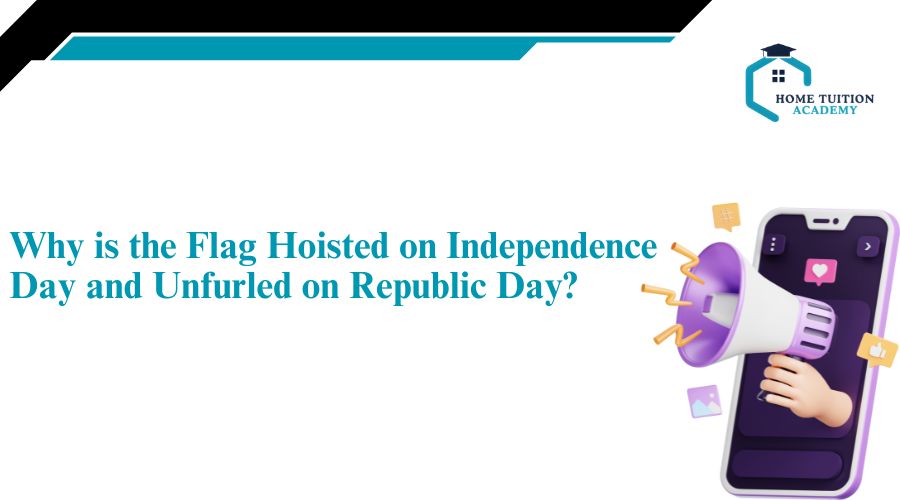Artificial Intelligence (AI) is no longer just a futuristic idea—it is already transforming classrooms around the world. From AI-powered learning apps to smart tutors that personalize lessons for each student, technology is reshaping the way education is delivered. In 2025, schools and universities are adopting AI faster than ever, making learning more interactive, accessible, and effective.
But does this mean AI is becoming the “new teacher”? Not exactly. Instead, AI is redefining the role of educators, helping them focus more on mentorship and creativity while machines handle repetitive tasks. This blog examines how AI is transforming education, the opportunities it presents, and whether it can effectively replace human teachers.
The Rise of AI in Education
Over the last decade, Artificial Intelligence has moved from being a buzzword to a real classroom tool. In 2025, AI is no longer just an experiment—it is an everyday reality in schools, colleges, and even online learning platforms.
AI-powered tools like Chatbots, Smart Tutors, and Virtual Classrooms are helping students learn at their own pace. For example, a student weak in mathematics can get instant practice questions, step-by-step solutions, and feedback—all tailored to their skill level. On the other hand, language learners now use AI-driven apps to practice speaking with near-human accuracy.
Recent reports show that over 60% of schools worldwide have adopted at least one AI-based learning tool. In India too, platforms like Byju’s, Vedantu, and Unacademy are using AI to make study sessions more personalized and engaging.
Simply put, AI is not replacing teachers—it’s making learning smarter, faster, and more student-friendly.
How AI is Changing the Role of Teachers
Many people fear that AI might “replace” teachers, but the reality is very different. In 2025, AI is transforming the role of teachers—not eliminating them.
Instead of spending long hours checking assignments or preparing repetitive worksheets, teachers are now able to use AI tools for:
-
Automated Grading: AI can instantly check quizzes, essays, and even coding assignments.
-
Classroom Insights: Smart systems analyze which students are struggling and suggest extra practice.
-
Personalized Teaching Plans: AI generates lesson variations based on different learning levels in the same class.
This shift means teachers can focus more on mentorship, creativity, and critical thinking, while AI handles the routine tasks. For example, a teacher can spend more time encouraging discussions, problem-solving, and emotional support—things AI cannot replace.
In short, AI is not the “new teacher.” Instead, it’s becoming a teaching assistant that helps educators do their job better.
Artificial Intelligence is revolutionizing classrooms globally. Students are adapting to new-age learning methods, and career choices are evolving rapidly. Explore the Top 25 Career Options in India that are trending in 2025.
Benefits of AI in Classrooms
AI is bringing real, practical benefits to classrooms worldwide. From India to the U.S., schools are adopting AI-powered tools to make learning smarter and more effective. Here are the key advantages:
1. Personalized Learning for Every Student
No two students learn the same way. AI platforms track performance, identify weak areas, and recommend customized study materials. For example, if one student struggles in algebra but excels in geometry, AI adjusts the practice accordingly.
2. Smarter Assessments
Traditional exams test memory, but AI-based assessments evaluate skills, problem-solving, and creativity. Adaptive quizzes also adjust difficulty based on the student’s progress.
3. 24/7 Learning Support
Chatbots and AI tutors are available round-the-clock, helping students clear doubts instantly—even outside school hours.
4. Reduced Teacher Workload
Teachers can save hours each week by automating grading, lesson planning, and attendance tracking. This frees them up for more engaging teaching.
5. Data-Driven Decisions
Schools can analyze student performance data through AI dashboards, making it easier to improve teaching methods and course design.
Challenges and Concerns of AI in Education
While AI is transforming classrooms, it also brings serious challenges that educators, parents, and policymakers must address.
1. Data Privacy & Security
AI tools collect massive amounts of student data—study patterns, behavior, and personal details. Without strict regulation, this data could be misused.
2. Over-Reliance on Technology
If students depend too much on AI tutors, they may lose critical thinking and problem-solving skills. Balancing human teaching with AI is crucial.
3. Teacher Job Concerns
Many fear that AI might replace teachers. In reality, AI should act as a support system, not a replacement. Human connection, empathy, and mentorship cannot be automated.
4. High Costs & Accessibility
Not all schools, especially in rural India, can afford AI-powered classrooms. This can create an education gap between privileged and underprivileged students.
5. Ethical Issues
From bias in AI algorithms to replacing real interactions with screens, the ethical impact of AI in education needs serious discussion.
Real-Life Examples of AI in Classrooms
AI in education is no longer just a concept—it’s already being used worldwide. Here are some real-life examples of how AI is reshaping learning:
1. BYJU’S (India)
One of the largest edtech platforms using AI-driven personalization. It tracks how students learn and adapts lessons to their pace.
2. Duolingo (Global)
A popular language-learning app that uses AI algorithms to predict mistakes, give personalized lessons, and improve retention.
3. Carnegie Learning (USA)
An AI-powered platform that helps students learn mathematics using adaptive learning techniques.
4. Google’s Socratic App
Students can take a photo of a problem, and the AI explains step-by-step solutions, making learning easier outside the classroom.
5. AI in Indian Classrooms
-
Smartboards with AI-based interactive lessons.
-
AI proctoring systems for online exams.
-
Chatbots in universities are helping students with admission queries.
AI in education isn’t just improving learning; it’s creating new, high-paying jobs. Check out our guide on the Highest Paying Jobs in India to prepare for the future.
Future of AI in Classrooms: What’s Next?
The role of Artificial Intelligence in education is only going to expand. Here’s what the future of AI-powered classrooms might look like:
1. Hyper-Personalized Learning
AI will create a unique study plan for every student based on strengths, weaknesses, and learning style.
2. AI-Powered Virtual Teachers
Students may soon have 24/7 AI tutors to answer doubts, explain lessons, and provide feedback instantly.
3. Predictive Analytics for Student Success
Schools will use AI to predict student performance and identify those who may need extra support before exams.
4. VR + AI for Immersive Learning
Subjects like history, geography, and science will become more engaging with AI + Virtual Reality (VR) classrooms, allowing students to experience lessons instead of just reading them.
5. Automated Skill-Based Education
AI will guide students towards career-specific skills (coding, design, finance, etc.) based on job market demands.
Challenges and Concerns with AI in Classrooms
While AI brings innovation, it also raises some serious challenges that schools, teachers, and policymakers must address:
1. Data Privacy & Security
AI systems collect huge amounts of student data. Without strong security, this information could be misused or hacked.
2. Overdependence on Technology
Relying too much on AI may reduce critical thinking and creativity in students if not balanced with human teaching.
3. Job Security for Teachers
Teachers fear that AI might replace their role. In reality, AI should act as a support system, not a replacement.
4. Accessibility Issues
Not all schools—especially in rural areas—can afford AI-powered tools, devices, and internet connectivity.
5. Ethical & Bias Concerns
If not designed carefully, AI tools may carry biases that could affect fair evaluation and opportunities for students.
Conclusion
Artificial Intelligence is not here to replace teachers, but to empower them and make classrooms more engaging, personalized, and efficient. From smart lesson planning to AI tutors and virtual classrooms, the education system is transforming rapidly.
However, the future of AI in education depends on how responsibly we balance technology and human touch. Teachers will always remain the guiding force, while AI acts as a supportive partner to shape the next generation of learners.
AI-driven education is opening global career paths. Learn how you can Get a Job Abroad from India and leverage AI skills to succeed internationally.
FAQs on AI in Education
Q1. Will AI replace teachers in the future?
No. AI will support teachers by automating tasks and offering personalized learning, but human teachers are essential for emotional, moral, and social guidance.
Q2. How is AI used in schools right now?
AI is used in smart classrooms, online learning apps, grading automation, chatbots for student queries, and personalized learning platforms.
Q3. What are the benefits of AI in education?
The major benefits are personalized learning, time-saving for teachers, smart assessments, wider accessibility, and interactive learning experiences.
Q4. Is AI affordable for all schools in India?
Currently, private and international schools are adopting AI faster. Government initiatives and EdTech companies are working to make AI tools more affordable and accessible in the coming years.
Q5. What is the future of AI in classrooms?
In the next 5–10 years, AI will play a big role in virtual reality-based classrooms, AI tutors, real-time student performance tracking, and global learning platforms.





